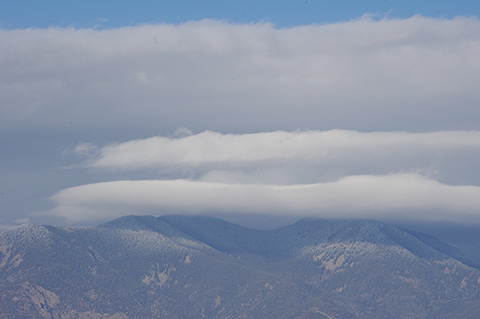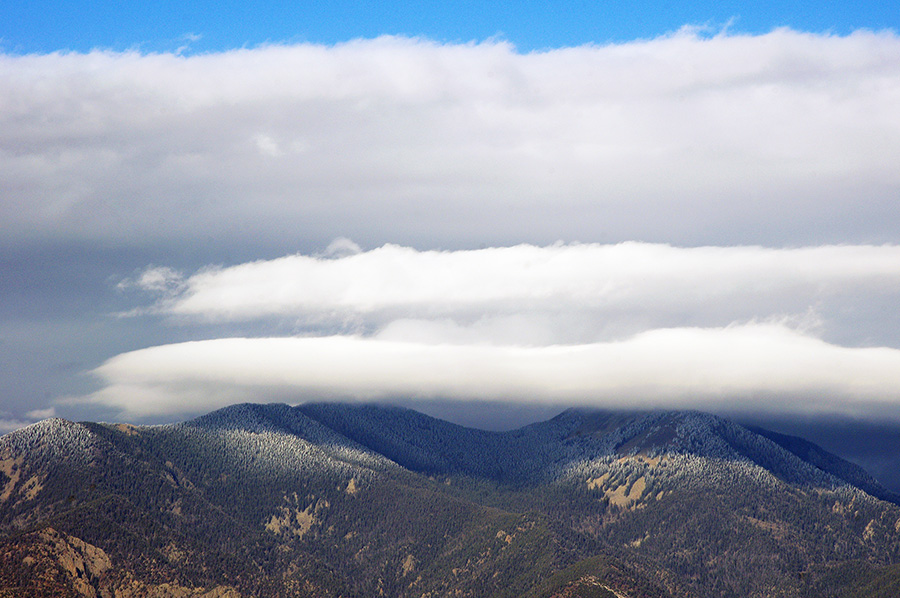I took this telephoto shot of Taos Mountain at around 3:00 p.m. Wednesday afternoon using my Pentax K-x with 55-300mm lens on the automatic setting. As I am a lazy ignoramus on the subject, it’s never occurred to me to use a filter, which may be one reason the long shots tend to end up washed out (see below).
I almost always do at least a little image manipulation in Photoshop. (Right now that would be Photoshop CC 2014.) My goal in this process is to make up for any limitations of the lens and sensor and end up with something real. It’s easy to go overboard, of course. Often that’s excusable in the name of art. But most of the time, I just want the image on my computer screen to be as accurate as possible, even if I have to imagine what “accurate” is. What you see above still isn’t quite right, just the best I can do at the moment, and certainly better than this:

That’s the original image as I downloaded it from my camera. No, I’m not shooting these in RAW format, although it’s probably way past time for me to get a clue.


.png)
Hi John, it’s been awhile, I could pass on some info on Raw vs. JPEG images, but here’s a couple of articles on the differences. I always shoot in raw, but that’s just me. Check these out:
http://digital-photography-school.com/raw-vs-jpeg/
http://digital-photography-school.com/should-you-be-shooting-raw/
Cheers, Fred
What a difference…I just love Photoshop. It not only brings out what the eyes see, sometimes it reveals what the heart feels too.
Beautiful!
I worked 31 years as a photojournalist and when Photoshop came around a photographer would have been fired for “going overboard” with manipulation, doing something other than like what you’ve done here, which was acceptable. A couple of years before I retired I worked as the “digital imaging specialist” (Photoshop guy) at a national magazine where the editor had me do all sorts of photo manipulation with Photoshop. So, I guess it just depends on the purpose of the photo.
You must log in to post a comment. Log in now.